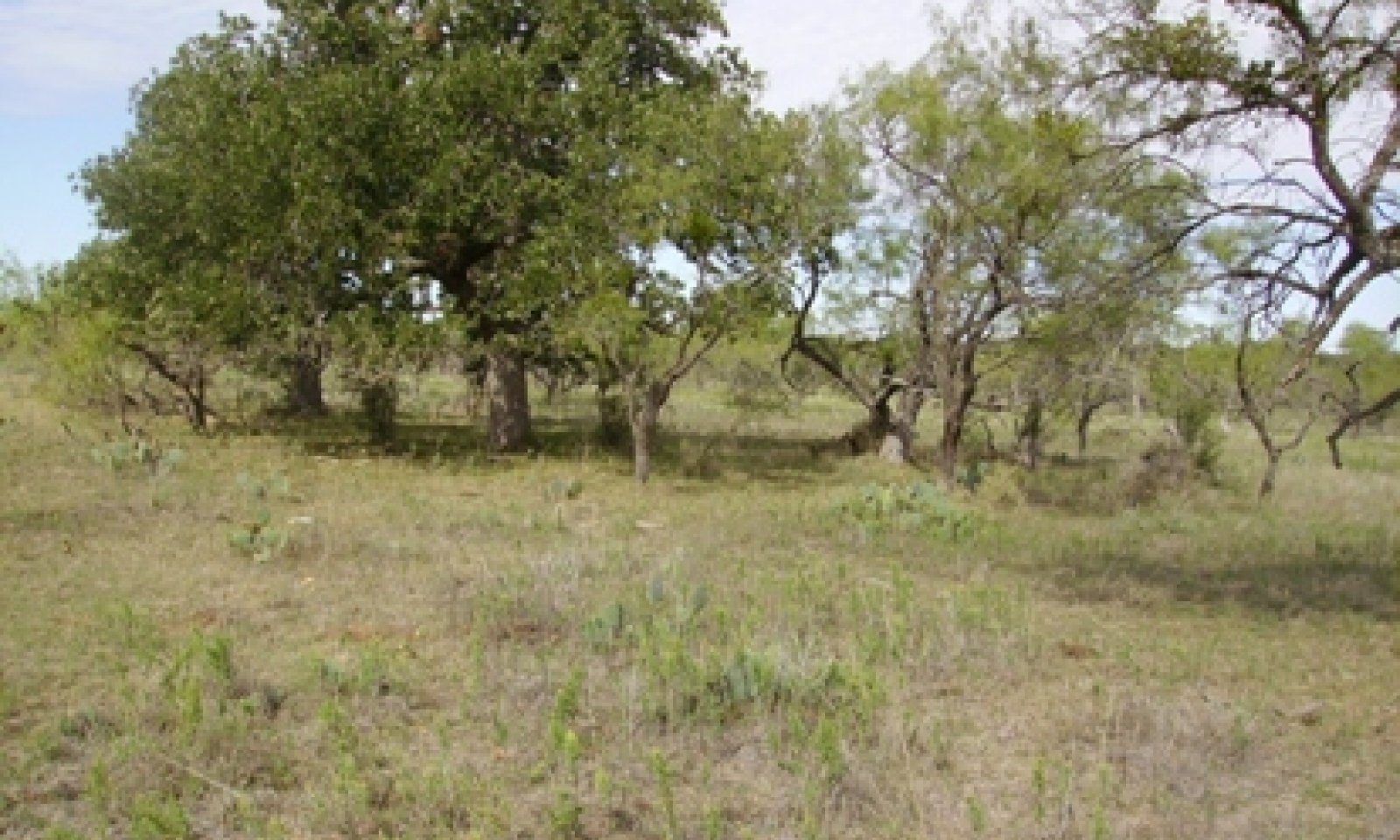
Red Savannah 25-32 PZ
Scenario model
Current ecosystem state
Select a state
Management practices/drivers
Select a transition or restoration pathway
- Transition T1A More details
- Transition T1B More details
- Restoration pathway R2A More details
- Transition T2A More details
- Transition T3A More details
-
No transition or restoration pathway between the selected states has been described
Target ecosystem state
Select a state
State 1
Grassland State



Description
Historically, trees, tallgrasses and shrubs were scattered along draws and deeper soil areas where soil moisture conditions are above average. Midgrasses dominated the plain and hillslope areas. The resulting plant community of the Red Savannah Ecological Site was a Mixed-grass Savannah Community (1.1) with tallgrasses, midgrasses, shortgrasses, perennial forbs and scattered trees.
The Midgrass Savannah Community (1.2) is midgrass dominated savannah being encroached by indigenous or invading woody species that had been held at low densities by repeated fires, browsing by wildlife and competition from a vigorous grass component. Numerous woody species, including bumelia, pricklypear, kidneywood and mesquite, are increasing in density because overgrazing by livestock has reduced grass cover, exposed some soil and reduced fine fuel for fire.
Submodel
State 2
Woodland State



Description
The Shortgrass/Mixed-brush Community (2.1) is the result of long-term overgrazing by livestock, the reduction or elimination of fire and little, if any, brush management. Oak and/or mesquite dominate this community. Mesquite has generally increased in density and stature.
The Shortgrass/Annuals Woodland Community (2.2) is the result of continuous overgrazing and no brush management. It is the mature stage of the Woodland State (2.0). Mesquite generally dominates the vegetation structure because most oaks have been removed and are unable to regenerate under prevailing conditions.
Submodel
Description
The Converted Land State is the composite of two land uses: pastureland and cropland. Pastureland is converted into native and introduced pasture species. Cropland is converted into cool and warm-season forage and small grain crops. This conversion requires intensive management inputs such as brush management, pasture/range planting, and crop cultivation.
Submodel
Mechanism
The transition between the Grassland State and the Woodland State is dramatic. Heavy Continuous Grazing, No Brush Management, and No Fire are several of the key driving forces in creating the plant functional group shift from Grassland to Shrubland State.
The changes in species composition are small initially, but unless proper grazing and prescribed burning are applied; the woody species will continue to increase in size and density. When the canopy of the woody plants becomes dense enough (20 %) and tall enough (>5 feet) to suppress grass growth and resist fire damage, a threshold in ecological succession is crossed.
Mechanism
The transition from the Grassland State (1.0) to the Converted Land State (3.0) requires intensive management inputs such as Brush Management, Pasture Planting, Range Planting, and Crop Cultivation. Land use other than livestock production might dictate alternative reclamation approaches to create the plant community that best fits the landowner’s intended use.
Mechanism
The transition from the Woodland State (2.0) to the Grassland State (1.0) requires intensive management inputs. Without intensive brush control and management inputs, this plant community cannot be reversed. Returning from the Woodland State (2.0) back to a Grassland State (1.0) requires extensive and expensive reclamation practices. Mechanical and/or chemical brush control must be followed by revegetation, prescribed grazing and prescribed burning practices.
Relevant conservation practices
| Practice | External resources |
|---|---|
|
Brush Management |
|
|
Prescribed Burning |
|
|
Prescribed Grazing |
|
|
Range Planting |
|
|
Planned Grazing System |
Mechanism
The transition from the Woodland State (2.0) to the Converted Land State (3.0) requires intensive management inputs such as Brush Management, Pasture Planting, Range Planting, and Crop Cultivation. Land use other than livestock production might dictate alternative reclamation approaches to create the plant community that best fits the landowner’s intended use.
Mechanism
The transition from the Converted Land State (3.0) to the Woodland State (2.0) is the result of implementing abusive grazing pressure, no fires, no brush management, no pastureland/cropland management, no pest or nutrient management, land abandonment, and idle land. This plant type will continue to thicken until it stabilizes within the present climate regime and soil. Without intensive brush control and management inputs, this plant community cannot be reversed to a grassland or woodland state.
Model keys
Briefcase
Add ecological sites and Major Land Resource Areas to your briefcase by clicking on the briefcase (![]() ) icon wherever it occurs. Drag and drop items to reorder. Cookies are used to store briefcase items between browsing sessions. Because of this, the number of items that can be added to your briefcase is limited, and briefcase items added on one device and browser cannot be accessed from another device or browser. Users who do not wish to place cookies on their devices should not use the briefcase tool. Briefcase cookies serve no other purpose than described here and are deleted whenever browsing history is cleared.
) icon wherever it occurs. Drag and drop items to reorder. Cookies are used to store briefcase items between browsing sessions. Because of this, the number of items that can be added to your briefcase is limited, and briefcase items added on one device and browser cannot be accessed from another device or browser. Users who do not wish to place cookies on their devices should not use the briefcase tool. Briefcase cookies serve no other purpose than described here and are deleted whenever browsing history is cleared.
Ecological sites
Major Land Resource Areas
The Ecosystem Dynamics Interpretive Tool is an information system framework developed by the USDA-ARS Jornada Experimental Range, USDA Natural Resources Conservation Service, and New Mexico State University.

